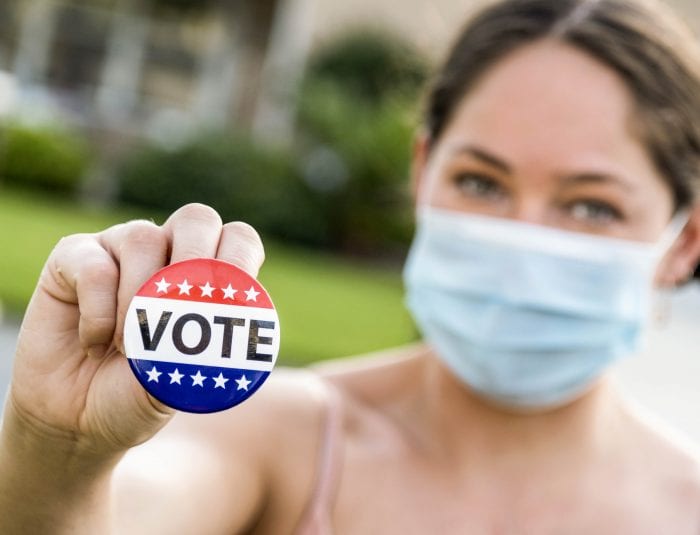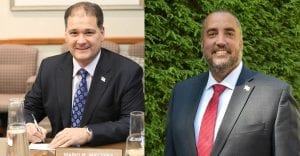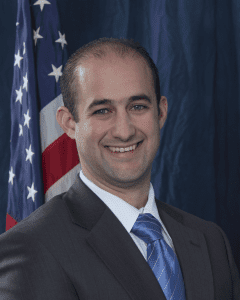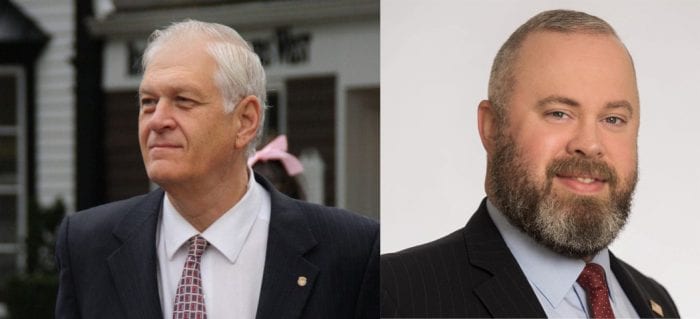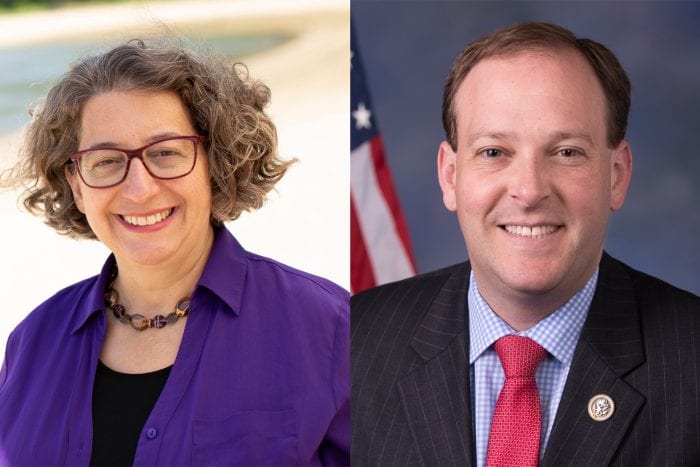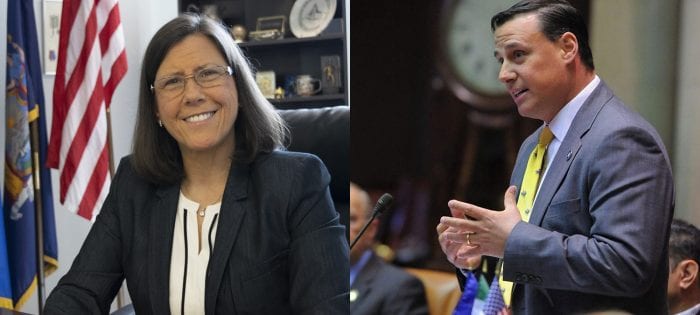If one is looking hard for the silver linings about the ongoing pandemic, it may be that residents seem to be returning to nature, filling up Long Island’s public parks and preserves in droves.
The Nature Conservancy, a global environmental nonprofit that has offices in Cold Spring Harbor, helps protect hundreds of nature preserves around the world. The organization has many on Long Island, including six on the North Shore such as Uplands Farm Nature Sanctuary in Cold Spring Harbor, the David Weld Sanctuary in Nissequogue and Wading River Marsh Preserve in Wading River. Those acres of protected land, according to conservancy officials, have seen a huge uptick in visitors over the past several months.
Mat Levine, the director of stewardship for the conservancy’s New York state branch, said that in a normal year, they could have somewhere between 150,000 to 200,000 visitors annually statewide. Since the start of spring into summer, they saw a jump of three times as many people visiting their nature preserves. While that has slowed down as of late, partially because of incoming cool weather and a slackening of COVID-19 restrictions, Levine said the number of visitors could say something about people’s desire to relieve stress using their own local natural environment.
“It was, it still is a tough time for a lot of people,” the New York stewardship director said. “People use nature to get a real mental and physical benefit.”

Jeremy Samuelson, director of the Mashomack Preserve on Shelter Island, also run by the conservancy, said the 2,000-acre parcel normally receives around 30,000 visitors a year. With the pandemic, they were seeing two to three times their normal load.
Employees on preserves were deemed essential workers back when everything started to close down in mid-March. The increased visitorship also meant the preserve and its employees had to work more toward managing the flow of people, giving them access and information, and maintaining the trails, all while trying to keep people safe.
“The challenge is in keeping our team members and visitors safe,” Samuelson said. “The way I describe it we are running a public interfacing institution, so we’ve had to like everybody else think about what we need to put more resources in this time, so we can be of service.”
Even with the new flow of visitors, the preserve director said they didn’t try to keep anyone away.
“Our goal is to get people to fall in love with nature, so as long as we can offer these facilities that balances welcoming people with making sure we’re taking care of natural resources, we should be throwing the door open wide,” he said.
In March, once theaters, restaurants, concert halls bars and so many other places for entertainment were closing down, Levine said people started coming by as the preserves were “one of the few places left open.” The hope, he said, is that more people are turning their attention to their local environment, and even larger environmental goals.
Avalon Nature Preserve in Stony Brook and St. James also saw an increase in visitors at the start of the pandemic, according to Park Director Katharine Griffiths. Many of those were people who had never come
through before.
Many people simply had nowhere else to go but visit their local parks, and Griffiths was glad to see new interest in the preserve. However, since things have opened up, she said the number of visitors are declining back down to where they were before the pandemic.
Griffiths said she has always argued for people to go back to nature, to get off their devices and experience the outdoors, but for her it’s hard to tell if the pandemic will be this large change in people’s attitudes.
“I guess we’ll see,” she said. “I do think this situation has given some people the opportunity to do something they normally wouldn’t have done.”
Back in June, The Nature Conservancy, along with Los Angeles-based public opinion research firm FM3, did a survey of 600 New York voters where 70% said the pandemic recovery offers an opportunity to better plan for climate change. Even more said they would want to give more New Yorkers easier access to public parks and preserves.
State Assemblyman Steve Englebright (D-Setauket) said state parks and preserves have also seen a “widespread pattern” of increased usage. Even in the local area, Englebright, who currently chairs the state Standing Committee on Environmental Conservation, has seen more people stopping by on Gnarled Hollow Road to use the Setauket to Port Jefferson Station Greenway Trail.
“Our investment in local parks and the environment seems to be paying off,” he said. “I think [these parks] will continue to be used at a much higher level than before.”
Suffolk County Legislator Kara Hahn (D-Setauket) is the chair of the Environment, Parks & Agriculture committee. She said county parks usage is definitely up, though there are many parks and trails that have no way to record the number of visitors. However, at the same time, outdoor activities also seem to be on the rise, as permits for activities like archery are up close to 30%.
For many of these places that were relatively underutilized, the increased attention can be a boon. However, for other outdoor environments that already see heavy use, there have been issues. McAllister County Park in Belle Terre has had residents complaining as the number of cars looking to park in the small lot on Anchorage Road has far exceeded the space available for them. Other more widely used parks have experienced an increase in parking problems and litter.
But for those who champion local parks and the environment, seeing this move toward nature can only be a positive in the future.
“There’s no question, people have been looking for places to escape stress, places that are safe, distanced and outdoors,” Hahn said.

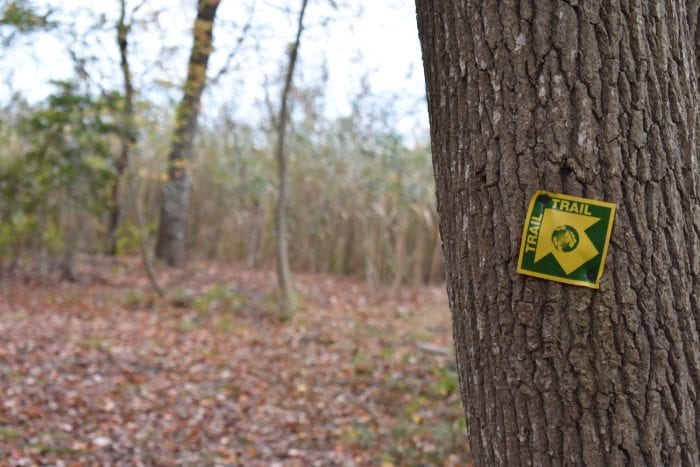
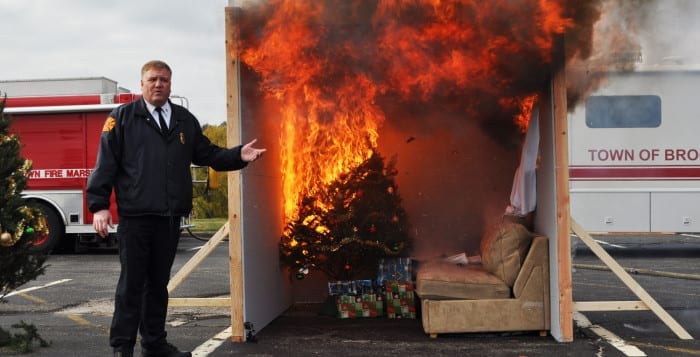
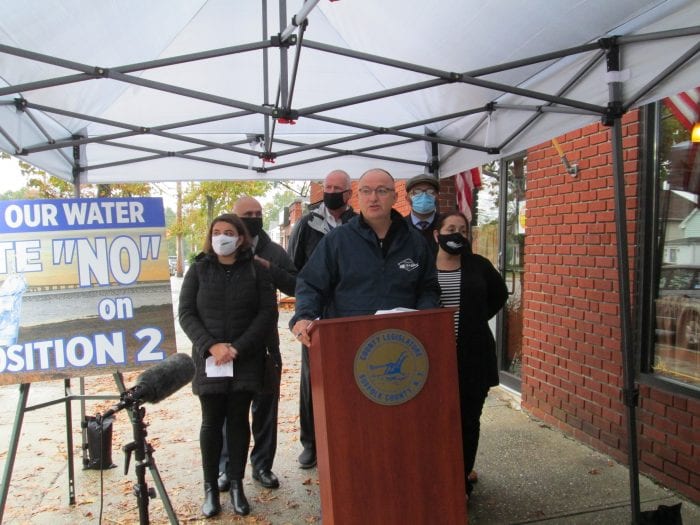




 Angela Palumbo is a Long Island native and recent college graduate from SUNY Cortland with a degree in communications and journalism with a minor in professional writing. Angela is currently studying remotely at the Craig Newmark Graduate School of Journalism for her masters in journalism with a concentration in business and economic reporting.
Angela Palumbo is a Long Island native and recent college graduate from SUNY Cortland with a degree in communications and journalism with a minor in professional writing. Angela is currently studying remotely at the Craig Newmark Graduate School of Journalism for her masters in journalism with a concentration in business and economic reporting. 